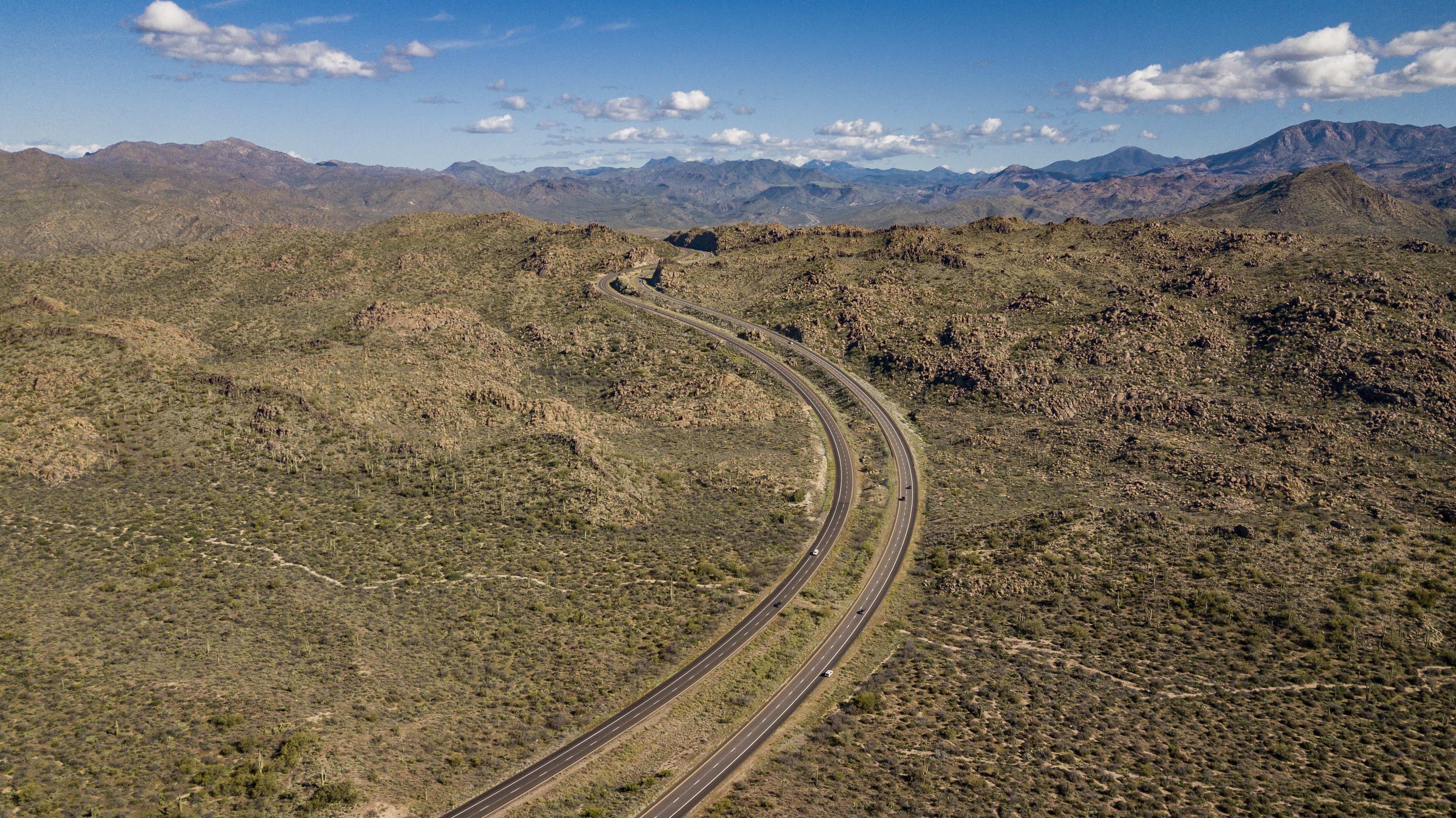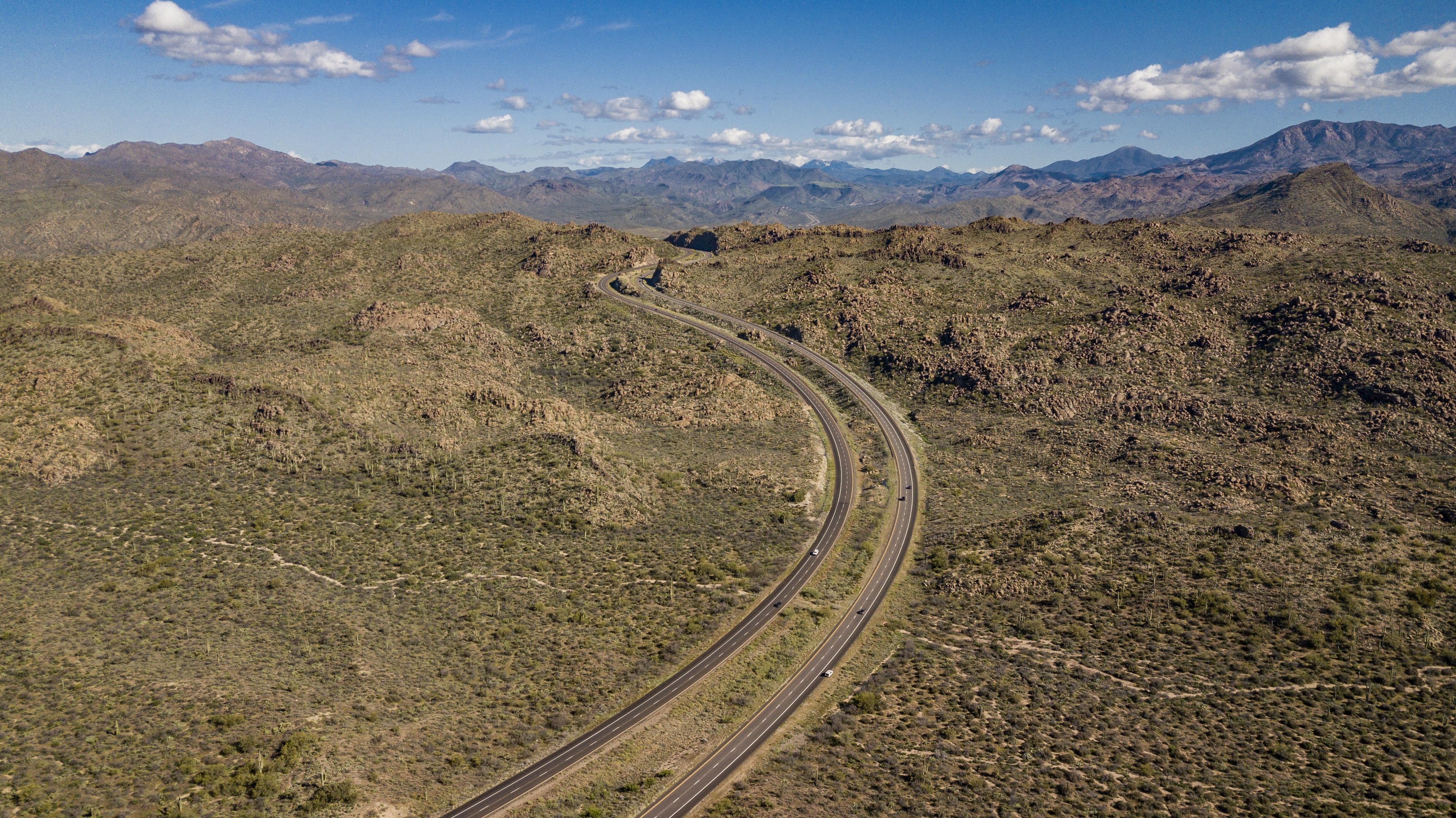Measuring slopes to prevent landslides
Measuring slopes to prevent landslides
Measuring slopes to prevent landslides
Measuring slopes to prevent landslides
Arizona’s mountainous terrain is as beautiful to look at as it is to drive through, but keeping dirt from those slopes off roadways can pose a technical challenge.
That’s one reason the Arizona Department of Transportation has deployed highly sophisticated measuring equipment on embankments across the state.
On a recent trip to State Route 87 between mileposts 224 and 225 south of Payson, ADOT Geologist James Lemmon and Engineer-in-Training Ivan Bystov inspected two examples of this technology. The hill they're working on is part of a decade-old landslide known as the Sunflower Landslide.
Lemmon and Bystov hiked along a ridge on the east side of the highway toward what looked like a yellow chimney sticking out of the hillside. In fact, the yellow riser is a steel casing to protect the inclinometer pipe and the piezometer equipment inside the well.
The inclinometer enables scientists like Lemmon and Bystrov to measure the rate of slope movement over time.
“We are trying to see if there is a change or any instability,” said Lemmon, an ADOT Geotechnical Design Section-Bridge Group member.
The information is used to take preventive action if the hill is moving down a slope toward the roadway.
“We know we must do something to buttress it to keep it from moving,” Lemmon said.
Lemmon said there are about 130 individual inclinometer wells installed at 30 embankment sites around the state. Sunflower Landslide has over 20 active inclinometers that are read on a regular basis. Some are on the roadway surface, many are on the near slopes and several are near the very top of the steep road cutouts and mountain slopes.
The piezometer measures moisture and saturation levels.
"When designing and constructing bridge foundations, we need to know the depth of where the saturated water level is under the surface so construction equipment doesn't sink and disappear into the saturated earth, Lemmon said. "And we design the foundation for a saturated groundwater situation. Those depths to water are measured by the piezometers."
The piezometer Lemmon and Bystrov displayed goes down about 60 feet deep, but Lemmon said there locations on the Sunflower Landslide where they go down nearly 400 feet deep.



